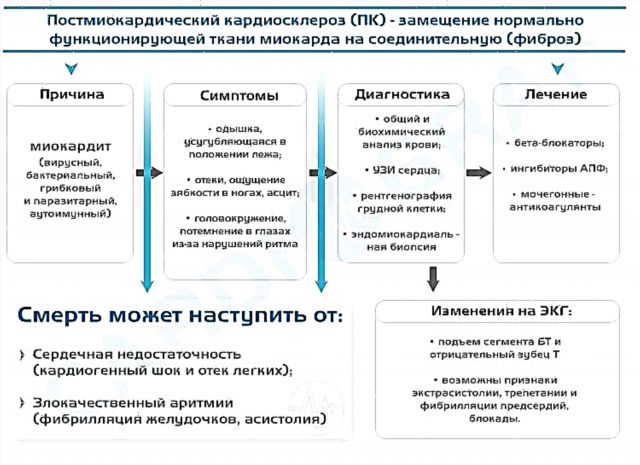Many diseases are accompanied by unpleasant acoustic sensations of varying intensity, the pathogenesis of which is based on damage to the organ of hearing and nearby structures. By the nature of the sound, the duration of its preservation and the brightness of manifestation, one can assume what pathological process the patient has encountered. Cracking in the ears when swallowing is a common problem, the causes of which usually lie in the presence of changes in the auditory tube of an infectious and inflammatory nature. Obsessive cracking during swallowing movements is accompanied by tubo-otitis, or eustachitis, a disease that often becomes a complication of acute and chronic damage to the respiratory system. In addition, a crackling noise appears in patients with aerootitis.
Eustachite
 Eustachitis can develop in patients of any age group. The disease is recorded in patients with acute respiratory infections and, as a rule, is of a secondary nature. An infectious agent in the classic version of ARVI causes changes in the respiratory organs - in particular, the mucous membrane of the nose and pharynx. An inflammatory process occurs, characterized by edema, redness, mucous secretion, and then, after the attachment of the bacterial flora, mucopurulent secretions. Objectively, this is revealed by nasal congestion, the release of various amounts of nasal secretions, sore throat, coughing - the patient has rhinopharyngitis.
Eustachitis can develop in patients of any age group. The disease is recorded in patients with acute respiratory infections and, as a rule, is of a secondary nature. An infectious agent in the classic version of ARVI causes changes in the respiratory organs - in particular, the mucous membrane of the nose and pharynx. An inflammatory process occurs, characterized by edema, redness, mucous secretion, and then, after the attachment of the bacterial flora, mucopurulent secretions. Objectively, this is revealed by nasal congestion, the release of various amounts of nasal secretions, sore throat, coughing - the patient has rhinopharyngitis.
Rhinopharyngitis of both viral and bacterial nature is in one way or another accompanied by dysfunction of the auditory tube, or tubular dysfunction. It should be noted its temporary nature - the disappearance of symptoms occurs along with the relief of signs of the underlying disease. But during the period of vivid clinical manifestations, rhinopharyngitis is accompanied by inflammation of the mucous membrane of the auditory tube and tympanic cavity. Developing eustachitis and tubo-otitis are also called middle ear catarrh. Since the pathological process in the auditory tube is usually combined with inflammation of the middle ear cavity, the concepts of "eustachitis" and "tubo-otitis" are considered by some specialists as identical.
The causes of cracking in the ears when swallowing are inflammation in the nasopharynx and a violation of the ventilation function of the auditory tube.
The provocateurs of the development of the disease can be:
- influenza viruses;
- adenoviruses;
- rhinoviruses;
- streptococci;
- staphylococci, etc.
Cracking in the ears when swallowing, as a sign of dysfunction of the auditory tube, almost always accompanies a pronounced runny nose. Since exudate appears in the tympanic cavity, there is a risk of infection and the development of a purulent form of otitis media.
Cracking is also characteristic of allergic rhinitis. Since the underlying disease can be observed for a long time without significant changes in the general condition of the patient (only in very rare cases with an allergic rhinitis, the body temperature rises to subfebrile numbers), a crunch in the ear when swallowing does not become a cause for serious concern. It is important not to ignore symptoms and provide appropriate therapy, as the perception of allergy as a harmless disease is misleading.
ignore symptoms and provide appropriate therapy, as the perception of allergy as a harmless disease is misleading.
Aerootit
Aerotitis is considered as a specific type of tubo-otitis. A feature is the occurrence exclusively during air flights, which is reflected in the name of the pathology. You need to think about aerootitis if cracking in your ears when swallowing saliva appears in the aircraft cabin along with other symptoms: congestion, pain, hearing loss.
The cause of the development of aerootitis is a barometric injury.
Barotrauma occurs when there is a sharp drop in atmospheric pressure during flight. The greatest risk of the formation of pathological changes exists in persons who suffer from acute rhinitis of an infectious or non-infectious nature. Therefore, air travel in the case of severe nasal congestion is highly undesirable.
Treatment
In acute catarrh of the middle ear, it is necessary to find out what disease is associated with the dysfunction of the auditory tube. If the patient has obstructive changes (for example, hypertrophic rhinitis, polyps), measures should be taken to normalize nasal breathing, including surgery if indicated. For respiratory infections and allergic rhinitis, the following appointment is relevant:
- Decongestants (Oxymetazoline, Sanorin, Galazolin).
- The introduction of glucocorticosteroids into the auditory tube.
- Blowing out the auditory tubes.
- Antihistamines (desloratadine).
All of the above methods and pharmacological agents are suitable in the absence of pus in the tympanic cavity. They are aimed at treating the underlying pathology, with the success of which the unpleasant manifestation also disappears - crackling in the ear when swallowing. If there is an average purulent otitis media, it is necessary to prescribe broad-spectrum antibiotics.
The introduction of topical decongestants should be done in a supine position with the head thrown back.
 Preparations from the group of decongestants for dysfunction of the auditory tube are intended to reduce the swelling of its pharyngeal orifice, to restore the patency of the lumen. They cannot be used for more than a few days, however, with proper treatment, they are necessary only in the initial period of the disease.
Preparations from the group of decongestants for dysfunction of the auditory tube are intended to reduce the swelling of its pharyngeal orifice, to restore the patency of the lumen. They cannot be used for more than a few days, however, with proper treatment, they are necessary only in the initial period of the disease.
Cleansing the nose also needs to be done correctly. You should blow your nose first with one, then with the second nostril; at the same time, a large amount of effort cannot be made - if the mucus is too thick, it is advisable to rinse the nose with a saline solution, use saline drops to moisturize the mucous membrane.
In case of aerootitis, treatment corresponds to the therapy described for acute catarrh of the middle ear. In order to prevent the disease if it is impossible to refuse air travel with rhinitis, it is necessary to use topical decongestants to ensure free nasal breathing during the travel period.



